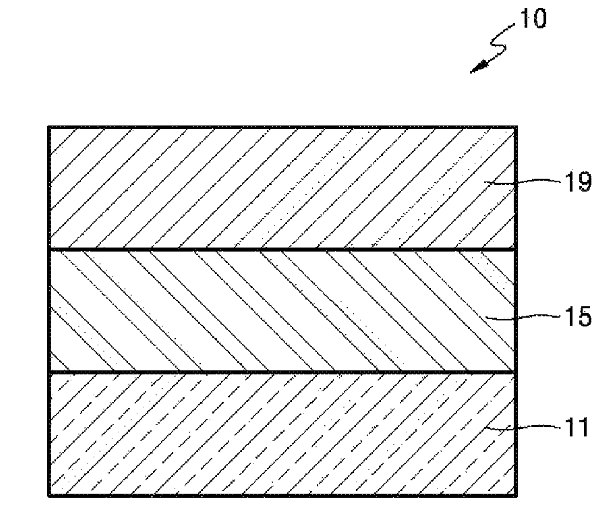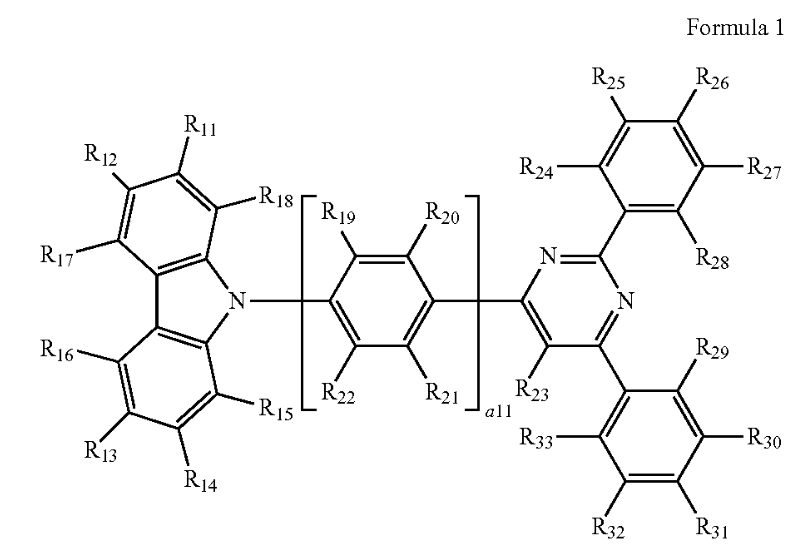News All News
June 9th, 2020
May 2020 patents
Innovations in soft robotics, evolving molecules in vitro, nucleic acid sequencing, hydrogels for tissue engineering, CRISPR enzymes and systems, analysis of animal behavior, and more
Harvard faculty David Weitz, George Whitesides, David R. Liu, George Church, David Mooney, Bob Datta, Ken Nakayama, Arlene Sharpe, Don Ingber, Doug Melton, Lee Rubin, Amy Wagers, Darren Higgins, Michael Starnbach, and Gu-Yeon Wei are among the inventors issued U.S. patents in May 2020.
The innovations recognized are as follows:
In vitro evolution in microfluidic systems
U.S. Patent 10,639,598 (May 5, 2020)
Andrew David Griffiths, David A. Weitz, Darren Roy Link, Keunho Ahn, and Jerome Bibette
Abstract: The invention describes a method for isolating one or more genetic elements encoding a gene product having a desired activity, comprising the steps of: (a) compartmentalising genetic elements into microcapsules; and (b) sorting the genetic elements which express the gene product having the desired activity; wherein at least one step is under microfluidic control. The invention enables the in vitro evolution of nucleic acids and proteins by repeated mutagenesis and iterative applications of the method of the invention.
Low strain pneumatic networks for soft robots
U.S. Patent 10,639,801 (May 5, 2020)
Bobak Mosadegh, Robert F. Shepherd, and George M. Whitesides
Abstract: An actuator includes a plurality of chambers comprised of an extensible material, the chambers having interior side walls and exterior walls, wherein at least a portion of the interior side wall is separated from an interior side wall of an adjacent chamber; and a strain limiting base; and a channel that fluidically interconnects the plurality of chambers, wherein the interior walls are configured to be more compliant than the exterior walls.
Assay for exo-site binding molecules
U.S. Patent 10,640,767 (May 5, 2020)
Juan Pablo Maianti and David R. Liu
Abstract: Methods for the identification of agents the bind to exo-sites of proteins are provided. Agents identified by the methods described herein and pharmaceutical compositions comprising the identified agents are also provided. Methods of using an identified agent for the treatment or prevention of a disease, disorder, or condition are also provided, including methods of treating or preventing a disease associated with reduced, elevated, or ectopic expression or aberrant activity of a protein comprising an exo-site.
RNA-guided transcriptional regulation
U.S. Patent 10,640,789 (May 5, 2020)
George M. Church, Prashant G. Mali, and Kevin M. Esvelt
Abstract: Methods of modulating expression of a target nucleic acid in a cell are provided including introducing into the cell a first foreign nucleic acid encoding one or more RNAs complementary to DNA, wherein the DNA includes the target nucleic acid, introducing into the cell a second foreign nucleic acid encoding a nuclease-null Cas9 protein that binds to the DNA and is guided by the one or more RNAs, introducing into the cell a third foreign nucleic acid encoding a transcriptional regulator protein or domain, wherein the one or more RNAs, the nuclease-null Cas9 protein, and the transcriptional regulator protein or domain are expressed, wherein the one or more RNAs, the nuclease-null Cas9 protein and the transcriptional regulator protein or domain co-localize to the DNA and wherein the transcriptional regulator protein or domain regulates expression of the target nucleic acid.
Spatial sequencing of nucleic acids using DNA origami probes
U.S. Patent 10,640,826 (May 5, 2020)
George M. Church, Richard C. Terry, and Frederic Vigneault
Abstract: A method of sequencing nucleic acids is provided using DNA origami as a barcode for a nucleic acid probe.
Cell-friendly inverse opal hydrogels for cell encapsulation, drug and protein delivery, and functional nanoparticle encapsulation
U.S. Patent 10,647,959 (May 12, 2020)
David J. Mooney, Jaeyun Kim, Sidi A. Bencherif, and Weiwei Aileen Li
Abstract: The invention provides polymer scaffolds for cell-based tissue engineering.
CRISPR enzymes and systems
U.S. Patent 10,648,020 (May 12, 2020)
Feng Zhang, Bernd Zetsche, Jonathan S. Gootenberg, Omar O. Abudayyeh, and Ian Slaymaker
Abstract: The invention provides for systems, methods, and compositions for targeting nucleic acids. In particular, the invention provides non-naturally occurring or engineered DNA-targeting systems comprising a novel DNA-targeting CRISPR effector protein and at least one targeting nucleic acid component like a guide RNA. Methods for making and using and uses of such systems, methods, and compositions and products from such methods and uses are also disclosed and claimed.
Devices and methods for analyzing animal behavior
U.S. Patent 10,650,228 (May 12, 2020)
David P. Roberson, Clifford J. Woolf, Michael T. Do, Alexander B. Wiltschko, Sandeep Robert Datta
Abstract: A device for detecting and recording animal behavior is provided. The device includes at least one corral that defines a contained field, the base surface of the at least one corral being sensitive to the animal's footprint. The device also includes an image capturing device that cooperates with the base surface to capture a first video frame in which at least one of a tail, body and head of the animal is illuminated by a light below the animal and a second video frame in which both a profile of a full footprint and a profile of a toe print of the animal when the animal is standing on its toes is illuminated by a light that is totally internally reflected within the base surface. A control system is arranged to control the image capturing device to capture the first and second video frames.
Systems and methods for machine learning enhanced by human measurements
U.S. Patent 10,650,280 (May 12, 2020)
David Cox, Walter Scheirer, Samuel Anthony, and Ken Nakayama
Abstract: In various embodiments, training objects are classified by human annotators, psychometric data characterizing the annotation of the training objects is acquired, a human-weighted loss function based at least in part on the classification data and the psychometric data is computationally derived, and one or more features of a query object are computationally classified based at least its part on the human-weighted loss function.
Organic light-emitting device
U.S. Patent 10,651,392 (May 12, 2020)
Hyun Sik Chae, Soonok Jeon, Hosuk Kang, Hiroshi Miyazaki, Sooghang Ihn, Seongik Hong, Masaki Numata, Sunghan Kim, Rafael Gomez-Bombarelli, Martin B. Z. Forsythe, Jorge Aguilera-Iparraguirre, Alan Aspuru-Guzik, and Timothy D. Hirzel
Abstract: An organic light-emitting device including a first electrode; a second electrode; and an organic layer disposed between the first electrode and the second electrode, wherein the organic layer comprises an emission layer, and wherein the organic layer comprises a first compound represented by Formula 1 and a second compound having the lowest excited triplet energy level greater than 2.73 electron volts:

wherein in Formula 1, R11 to R33 are the same as described in the specification.
Methods and compositions for perturbing gene expression in hematopoietic stem cell lineages in vivo
U.S. Patent 10,653,123 (May 19, 2020)
William N. Haining, Arlene H. Sharpe, and Jernej Godec
Abstract: The invention provides methods and compositions for perturbing gene expression in hematopoietic cell lineages in vivo.
Cell culture system
U.S. Patent 10,655,098 (May 19, 2020)
Donald E. Ingber and Hyun Jung Kim
Abstract: The embodiments of the invention described herein relate to systems and methods for culturing and/or maintaining intestinal cells, tissues and/or organoids in vitro. The cells, tissues and/or organoids cultured according to the methods and systems described herein can mimic or reproduce natural intestinal epithelial structures and behavior as well as support co-culture of intestinal microflora.
SC-beta cells and compositions and methods for generating the same
U.S. Patent 10,655,106 (May 19, 2020)
Quinn P. Peterson, Felicia J. Pagliuca, Douglas A. Melton, Jeffrey R. Millman, Michael Saris Segel, and Mads Gurtler
Abstract: Disclosed herein are methods, compositions, kits, and agents useful for inducing β cell maturation, and isolated populations of SC-β cells for use in various applications, such as cell therapy.
Method of increasing satellite cell proliferation with an HDAC inhibitor
U.S. Patent 10,660,902 (May 26, 2020)
Lee L. Rubin, Amanda Gee, and Amy J. Wagers
Abstract: The invention provides methods for inducing, enhancing or increasing satellite cell proliferation, and an assay for screening for a candidate compound for inducing, enhancing or increasing satellite cell proliferation. Also provided are methods for repairing or regenerating a damaged muscle tissue of a subject.
Compositions for and methods of identifying antigens
U.S. Patent 10,662,423 (May 26, 2020)
Darren E. Higgins, Michael N. Starnbach, Todd Gierahn, and Nadia R. Roan
Abstract: Replicable libraries having discrete members in defined locations for screening for antigens to a pathogenic organism are provided. Also provided are methods for using such libraries as well as a specific antigen, CT788, which induces T-cell activation during a Chlamydia infection.
Highly integrated high voltage actuator driver
U.S. Patent 10,666,145 (May 26, 2020)
Simon Chaput and Gu-Yeon Wei
Abstract: A single die driver integrated circuit is coupled to an input portion having a single inductor receiving a low voltage source and configured to drive a capacitive load with an output voltage. The driver includes a bidirectional synchronous power converter stage configured to generate a switching voltage from the input portion at a switching node and to generate a high voltage waveform from the low-voltage source. An embedded controller is configured to control a switch of the power converter stage.
Tags: Issued Patents
Press Contact: Kirsten Mabry | (617) 495-4157
